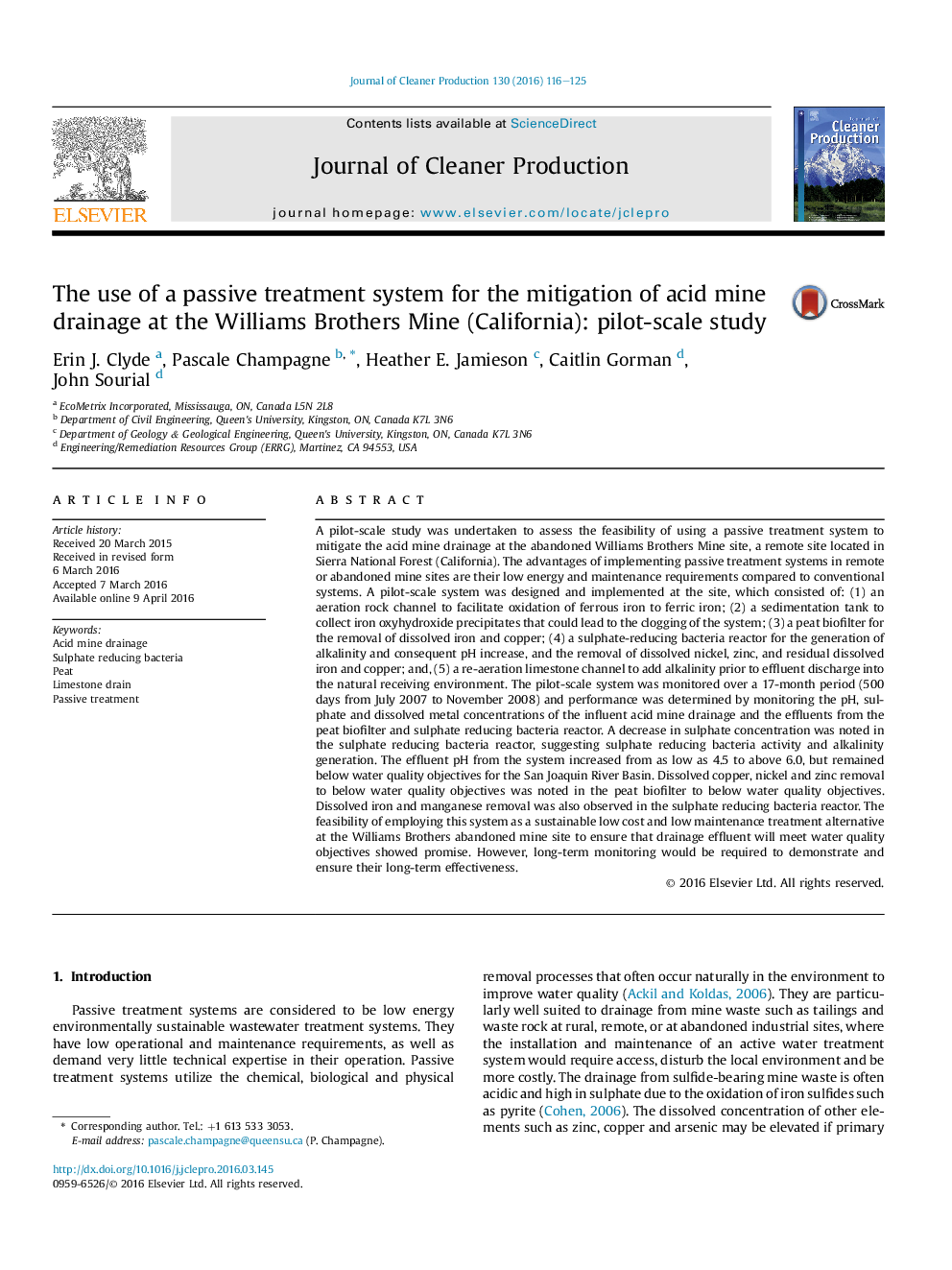| کد مقاله | کد نشریه | سال انتشار | مقاله انگلیسی | نسخه تمام متن |
|---|---|---|---|---|
| 1744042 | 1522119 | 2016 | 10 صفحه PDF | دانلود رایگان |
• A pilot-scale passive system to treat acid mine drainage was tested for 16 months.
• Copper, nickel and zinc were reduced in the peat biofilter.
• The sulphate reducing bacteria reactor removed iron and manganese.
• Effluent pH from the system increased from as low as 4.5 to above 6.0
• Passive treatment is a feasible alternative for Williams Brothers abandoned mine site.
A pilot-scale study was undertaken to assess the feasibility of using a passive treatment system to mitigate the acid mine drainage at the abandoned Williams Brothers Mine site, a remote site located in Sierra National Forest (California). The advantages of implementing passive treatment systems in remote or abandoned mine sites are their low energy and maintenance requirements compared to conventional systems. A pilot-scale system was designed and implemented at the site, which consisted of: (1) an aeration rock channel to facilitate oxidation of ferrous iron to ferric iron; (2) a sedimentation tank to collect iron oxyhydroxide precipitates that could lead to the clogging of the system; (3) a peat biofilter for the removal of dissolved iron and copper; (4) a sulphate-reducing bacteria reactor for the generation of alkalinity and consequent pH increase, and the removal of dissolved nickel, zinc, and residual dissolved iron and copper; and, (5) a re-aeration limestone channel to add alkalinity prior to effluent discharge into the natural receiving environment. The pilot-scale system was monitored over a 17-month period (500 days from July 2007 to November 2008) and performance was determined by monitoring the pH, sulphate and dissolved metal concentrations of the influent acid mine drainage and the effluents from the peat biofilter and sulphate reducing bacteria reactor. A decrease in sulphate concentration was noted in the sulphate reducing bacteria reactor, suggesting sulphate reducing bacteria activity and alkalinity generation. The effluent pH from the system increased from as low as 4.5 to above 6.0, but remained below water quality objectives for the San Joaquin River Basin. Dissolved copper, nickel and zinc removal to below water quality objectives was noted in the peat biofilter to below water quality objectives. Dissolved iron and manganese removal was also observed in the sulphate reducing bacteria reactor. The feasibility of employing this system as a sustainable low cost and low maintenance treatment alternative at the Williams Brothers abandoned mine site to ensure that drainage effluent will meet water quality objectives showed promise. However, long-term monitoring would be required to demonstrate and ensure their long-term effectiveness.
Journal: Journal of Cleaner Production - Volume 130, 1 September 2016, Pages 116–125
